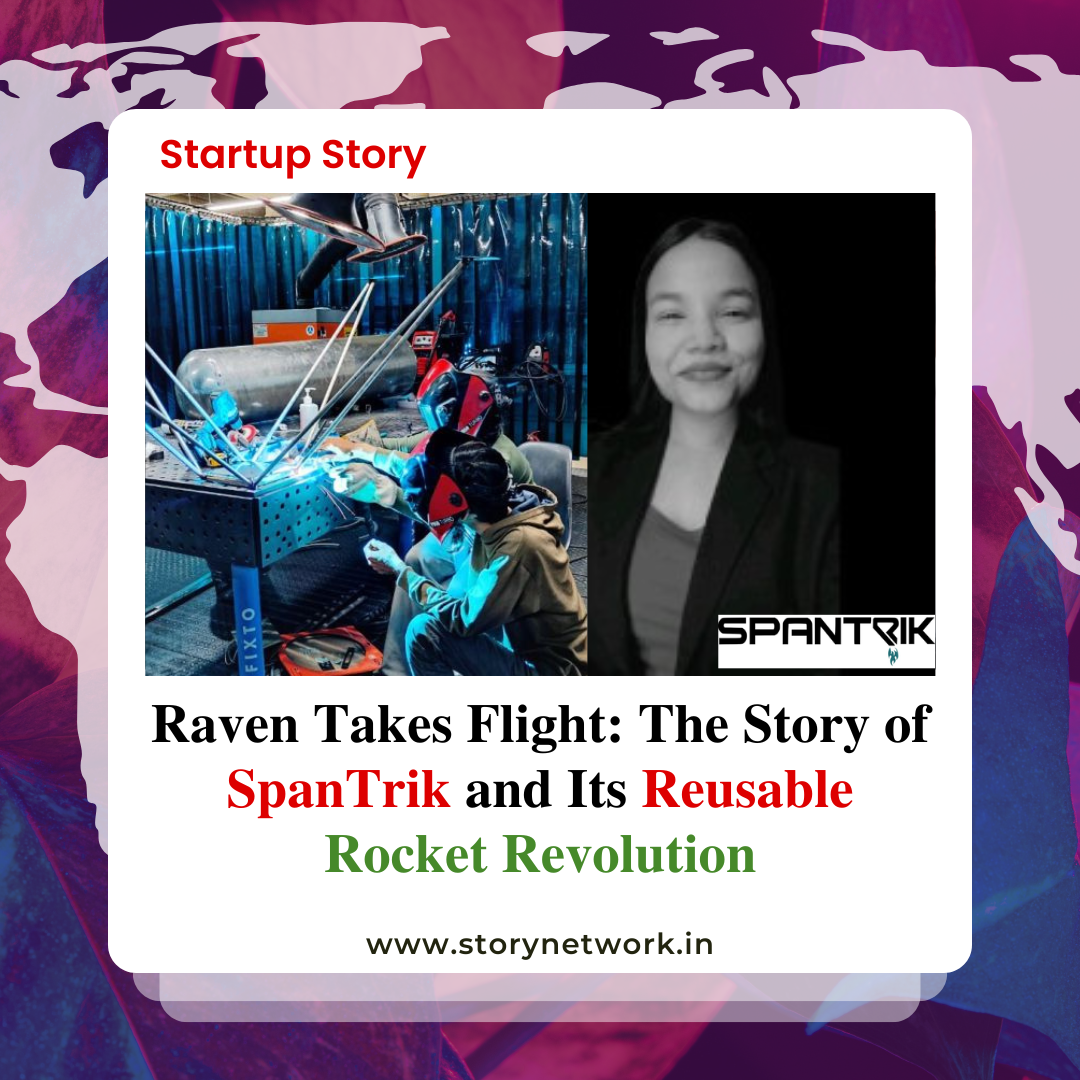Breaking Barriers in Space Innovation: The Story of SpanTrik and Kajal Rajbhar
The space industry has long been dominated by established players with significant resources and decades of experience. However, startups like SpanTrik, based in Hyderabad, are rapidly rewriting this narrative. Founded in May 2022 by Kajal Rajbhar, SpanTrik is making waves with its focus on developing fully reusable space launch vehicles. With a mission to make space exploration more sustainable, cost-effective, and accessible, SpanTrik is an inspiring example of innovation, resilience, and vision.
A Visionary Beginning: The Story of Kajal Rajbhar and SpanTrik
The journey of SpanTrik is deeply intertwined with the vision of its founder, Kajal Rajbhar. Hailing from a background of engineering and a passion for space technology, Kajal sought to challenge conventional aerospace practices. Her entrepreneurial drive led to the inception of SpanTrik, a name derived from “Space” and “Antriksh” (Sanskrit for cosmos), symbolizing the company’s mission to bridge technology and exploration.
SpanTrik was co-founded with Hitendra Singh, and together they built a foundation based on indigenous innovation and cutting-edge technology. Kajal’s leadership has not only brought technical breakthroughs but also inspired a new generation of aerospace enthusiasts.
The Core Innovation: Raven Reusable Rocket
SpanTrik’s flagship project, the Raven, is a marvel of engineering designed for full reusability. Unlike conventional rockets that become obsolete after a single use, Raven is engineered for multiple missions with minimal refurbishment. Here’s what makes Raven stand out:
- Payload Capacity:
- To Low Earth Orbit (LEO): Up to 22,000 kg in expendable mode and 14,000 kg in reusable mode.
- To Geosynchronous Transfer Orbit (GTO): Up to 9,000 kg (expendable) and 5,000 kg (reusable).
- Capable of interplanetary missions, including payloads to the Moon and Mars.
- Advanced Materials:
Raven incorporates state-of-the-art lightweight materials for optimal performance and fuel efficiency. - Sustainability Focus:
- Fully reusable designs drastically reduce costs and environmental impact.
- Efficient fuel systems minimize carbon emissions during launches.
- Rapid Turnaround:
- Raven can be prepared for subsequent launches without significant delays, facilitating quicker missions.
The Journey of Breakthroughs
SpanTrik has demonstrated an impressive trajectory in the aerospace industry within a short time frame. Their early success includes the development and testing of critical components such as:
- Eureka Engine: A cryogenic engine that powers the Raven’s second stage, ensuring efficiency and reliability during orbital insertion.
- Leapfrogger Demonstrator: A subscale prototype used to validate reusable technologies.
These achievements reflect the company’s commitment to research and development, as well as its potential to compete with global leaders in reusable space systems.
The Role of Indigenous Innovation
SpanTrik stands out for its focus on leveraging indigenous talent and resources. By collaborating with Indian universities and research institutions, SpanTrik not only reduces costs but also contributes to the country’s technological independence in the aerospace sector. This aligns with India’s broader vision of self-reliance in advanced technology, as outlined in initiatives like Atmanirbhar Bharat.
Overcoming Challenges in the Aerospace Sector
Starting a space-tech company is no small feat. The challenges SpanTrik faces include:
- Capital-Intensive Development: Building reusable rockets requires substantial investment in research, testing, and infrastructure.
- Regulatory Hurdles: Navigating through space-related policies and obtaining clearances is often a lengthy and complex process.
- Global Competition: Competing with established giants like SpaceX, Blue Origin, and Rocket Lab is a daunting task for any startup.
Despite these obstacles, SpanTrik has managed to secure interest from investors and government agencies, positioning itself as a key player in India’s growing private space industry.
India’s Space-Tech Revolution
SpanTrik is part of a broader trend of private sector participation in India’s space exploration endeavors. The opening of the Indian space market to private players has led to a surge in innovation, with startups exploring satellite manufacturing, space debris management, and interplanetary exploration.
India’s low-cost space missions, exemplified by the Chandrayaan and Mangalyaan programs, have already garnered global attention. SpanTrik seeks to build on this legacy by providing affordable launch solutions for both domestic and international clients.
The Road Ahead: A Future Full of Possibilities
SpanTrik’s roadmap includes ambitious plans to expand its capabilities and reach:
- Global Collaborations:
- Partnerships with international space agencies and private companies to facilitate knowledge exchange and resource sharing.
- Satellite Deployment Services:
- Offering cost-effective solutions for deploying constellations of small satellites, a booming market driven by sectors like telecommunications and Earth observation.
- Interplanetary Missions:
- Leveraging Raven’s capability to deliver payloads to the Moon and Mars, supporting scientific exploration and commercial ventures.
- Public Outreach:
- Inspiring the next generation through educational programs, internships, and STEM initiatives.
Kajal Rajbhar: An Inspiration for Aspiring Entrepreneurs
Kajal Rajbhar’s journey as the founder of SpanTrik is a testament to perseverance and visionary leadership. As a woman entrepreneur in a male-dominated field, she has shattered stereotypes and set a benchmark for inclusivity in aerospace. Her story inspires budding entrepreneurs to dream big and overcome barriers with determination.
Why SpanTrik Matters
SpanTrik’s work has far-reaching implications not just for the aerospace sector but for humanity as a whole. By making space exploration more accessible, the company is opening doors to new possibilities in science, communication, and even everyday life. Reusable rockets like Raven could one day make interplanetary travel a reality, ushering in a new era of human exploration.
Conclusion: A Star on the Horizon
SpanTrik, under the leadership of Kajal Rajbhar, is more than just a startup; it’s a beacon of what can be achieved with innovation, determination, and a commitment to sustainability. As it continues to evolve and expand, SpanTrik is set to play a pivotal role in shaping the future of space exploration.
If you’re inspired by SpanTrik’s journey, explore more about their projects at SpanTrik. This is just the beginning for a company that’s truly reaching for the stars.





